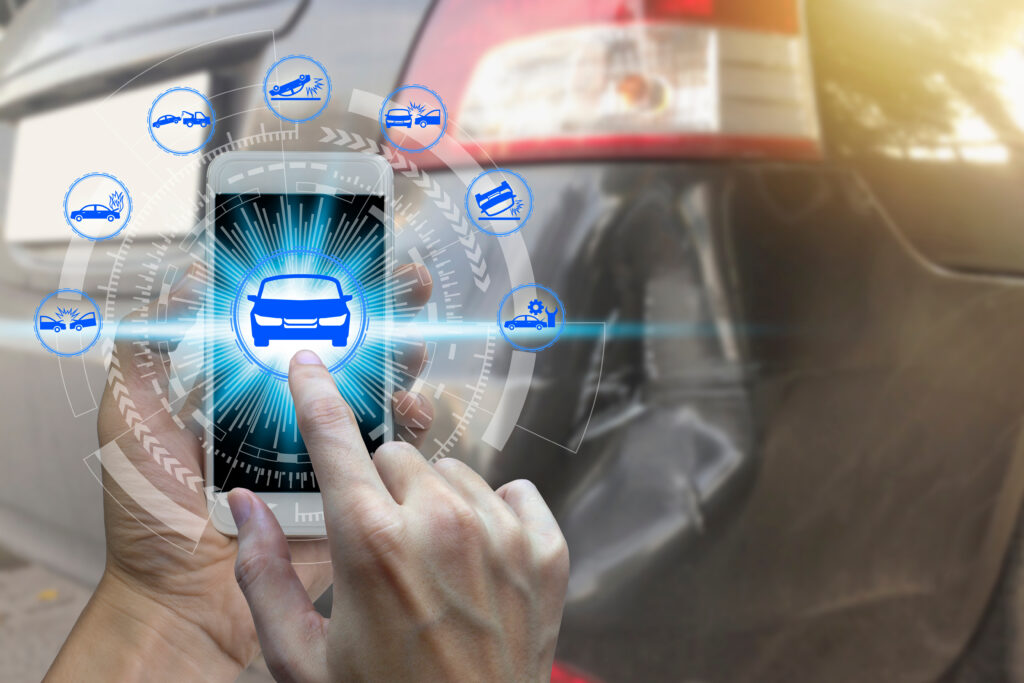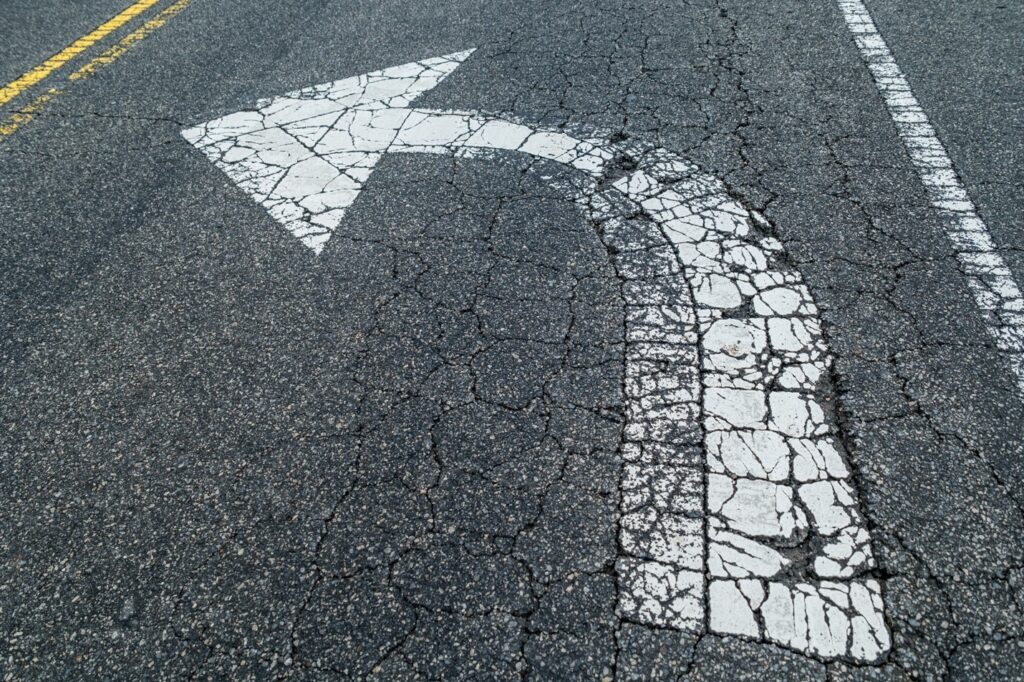
As personal injury attorneys specializing in truck and auto crash cases, we are familiar with some of the risks faced by cyclists, particularly in intersections with bike lanes. Like many other types of accidents, left turns often play a role. In this post, we will go over some types of accidents involving bike lanes and left-turning vehicles. We will focus specifically on left cross accidents, but we will also explore the reverse scenario involving right turns called right hook accidents. By illuminating the risks for cyclists when navigating left-turning vehicles, we hope to contribute to your awareness of these potential dangers. We will talk about the causes, prevention measures, and potential consequences of these accidents.
Some Types of Accidents Involving Bike Lanes and Left-Turning Vehicles:
- The Squeeze Play
In the case of a “squeeze play,” the left-turning vehicle fails to yield to the cyclist in the bike lane, causing the cyclist to be “squeezed” between the curb and the vehicle. This can cause a collision and potentially serious injuries.
- The Hook and Cross
The “hook and cross” accident scenario is when a left-turning vehicle makes its turn across a bike lane without yielding to the oncoming cyclist. Misjudgment of the cyclist’s speed may cause serious collisions and potentially fatal injuries.
- The Late Merge
A “late merge” occurs when a driver fails to merge gradually into the bike lane before making a left turn, and instead abruptly crosses the bike lane. Drivers can surprise cyclists with this sudden maneuver and leave them with little time to react, potentially resulting in a serious collision.
- The Dooring Danger
One common cause of collisions is not specific to left turns but is worth mentioning, nonetheless. “Dooring danger” is the risk of drivers in the parked lane opening their doors without checking behind them, obstructing the bike lane abruptly. Not only can cyclists collide with the car door, but the obstruction may cause them to swerve into oncoming traffic which is highly dangerous.
Unveiling Left Cross Accidents
- Definition and Common Scenarios
Left cross accidents occur when a left-turning vehicle fails to yield to an oncoming cyclist in the bike lane, causing a collision. This is a relatively common occurrence at intersections where the bike lane crossing the path of left-turning vehicles.
- Consequences for Cyclists
Left cross accidents are highly dangerous collisions that can lead to severe or even fatal injuries. Drivers tend to make left turns more quickly than right turns, resulting in higher speeds of impact.
- Factors Contributing to Left Cross Accidents
Misjudging Speed and Distance: Drivers may find it difficult to judge the speed and distance of oncoming cyclists. Drivers who intend to make a hasty turn may overestimate the gap in cyclist traffic. It is important that drivers only make left turns when it is clearly safe to do so and there is plenty of distance from oncoming traffic.
Inadequate Intersection Design: Some intersections may lack clear signage, dedicated left-turn signals, or proper lane markings. This significantly increases the risk of left cross accidents.
Lack of Awareness: Especially at unfamiliar intersections, both drivers and cyclists may be unaware of traffic patterns. It is the driver’s responsibility to yield to cyclists, and it to take additional time to familiarize yourself with your surroundings when making left turns.
Understanding Right Hook Accidents:
- Definition and Common Scenarios
Right hook accidents are when a vehicle makes a right turn without yielding to a cyclist traveling straight in the adjacent bike lane. These accidents occur most often when vehicles have merged into the bike lane obstructing their view of cyclists behind them, or in intersections where the bike lane is positioned adjacent to traffic.
- Consequences for Cyclists
Right hook accidents can be very serious, especially when a cyclist is traveling quicky and caught of guard by the turning vehicle. It is the driver’s responsibility to check their mirrors and blind spot before making their turn, though cyclists should be aware that some drivers may make an unsafe turn.
- Factors Contributing to Right Hook Accidents
Limited Visibility: Bike lanes that are positioned on the side of the road may make cyclists harder to see. Drivers must turn around to check their blind spot, especially if the adjacent bike lane is difficult to see.
Driver Inattention and Distractions: Like many other types of collisions, driver inattention plays an outsized role. Using your phone while driving is never safe, especially at intersections when multiple flows of cyclist and pedestrian traffic need to be accounted for.
Failure to Yield: Drivers who see a cyclist coming may misjudge the speed and distance of the cyclist. In this scenario, the driver may fail to yield resulting in a collision.
Preventive Measures and Infrastructure Improvements:
- Enhanced Driver Education and Awareness
As bike lanes become more ubiquitous on city streets, proper education, and awareness campaigns need to be implemented. Drivers must know that vehicle traffic is only one part of what they should be aware of, and cyclist traffic can be just as unpredictable.
- Promoting Cyclist Visibility
Cyclists should be encouraged to wear reflective clothing, use reflective gear, and have reflectors on their bikes. This is especially important at dusk and during nighttime hours when visibility is especially low.
- Intersection Design and Engineering Solutions
Intersections should be designed with safety in mind for drivers and cyclists as well as pedestrians. Not only should proper signage and signaling be implemented, but the physical layout of an intersection plays a large role in visibility for drivers and cyclists alike.
- Policy Changes and Legislative Efforts
It is important to push for policies that prioritize safety, like minimum passing distance laws, protections for vulnerable road users, and increased penalties for accidents involving cyclists.
Accidents involving cyclists and left-turning vehicles, as well as right hook accidents, are particularly dangerous. By understanding the causes, being proactive by implementing preventative measures, and improving infrastructure, we can make the roads safer for both drivers and cyclists.
Understanding the types of accidents involving left-turning vehicles and bike lanes is crucial knowledge to help drivers and cyclists stay safe. The squeeze play, hook and cross, late merge, and dooring danger scenarios all require increased awareness on the part of drivers to avoid such scenarios.




